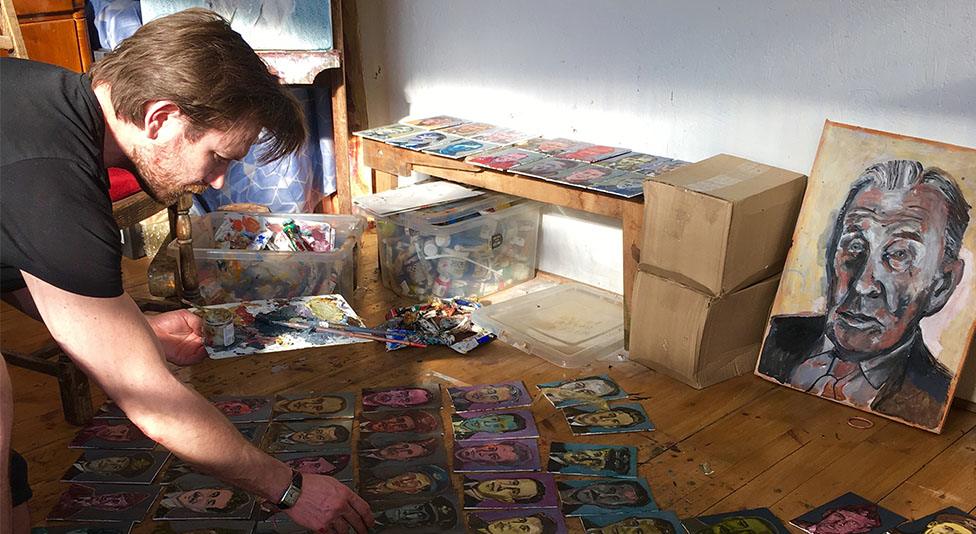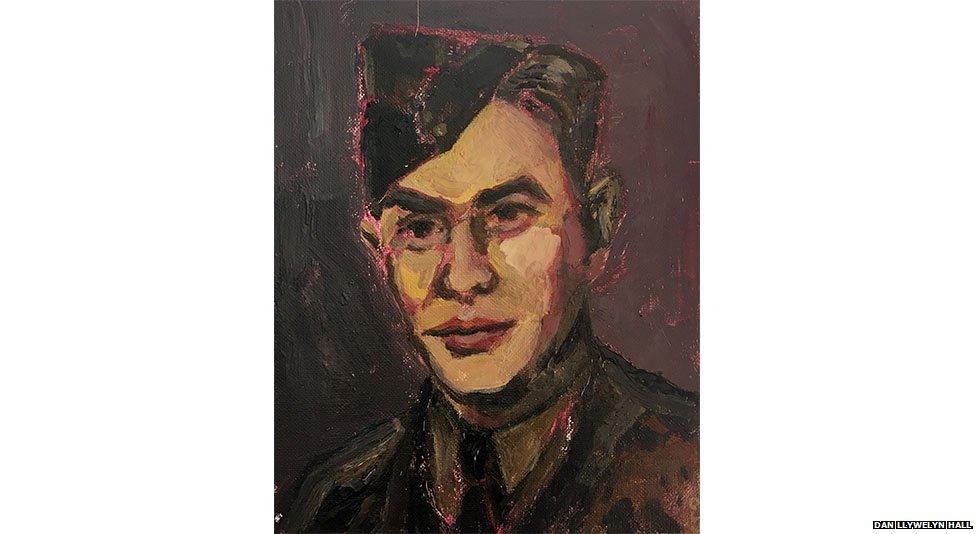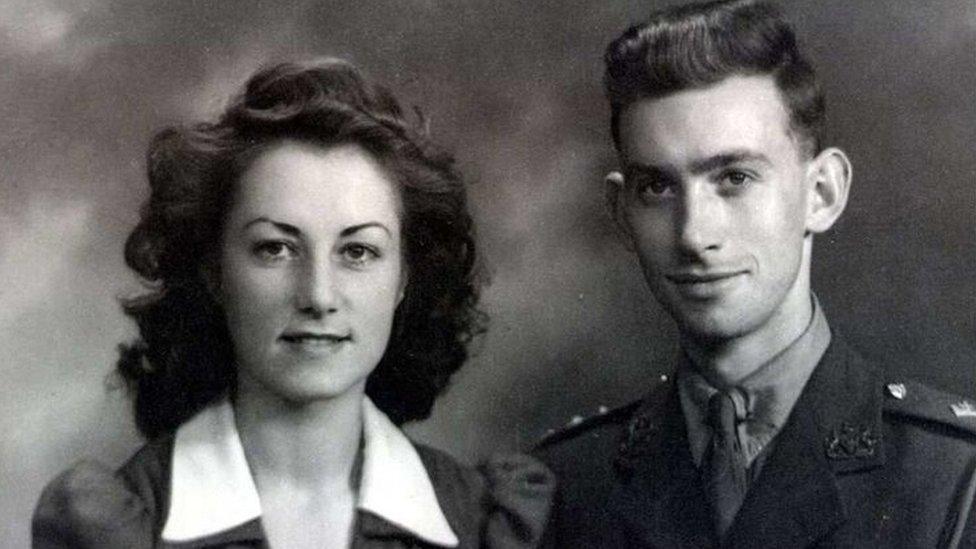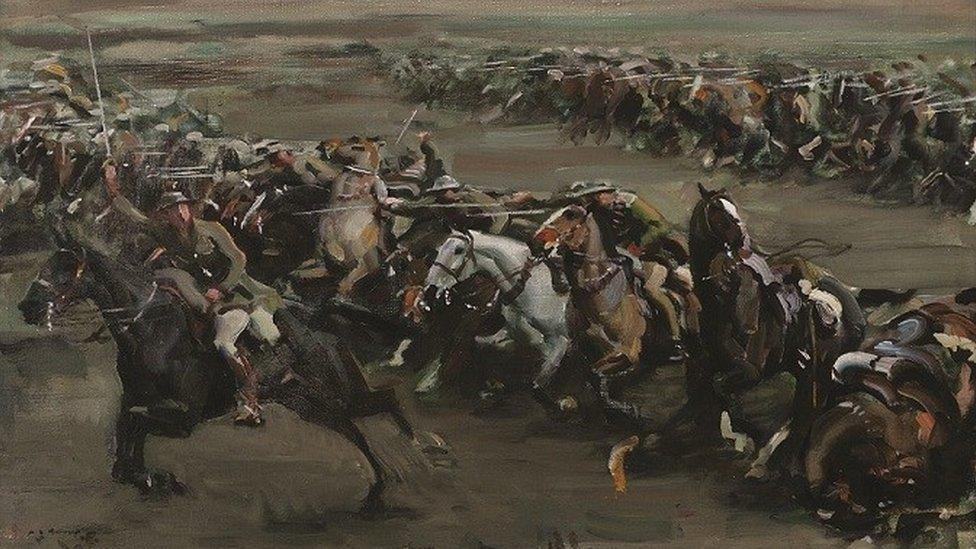Queen's artist paints last Canadian WWII 'Dam Buster' pilot
- Published

Artist Dan Llywelyn Hall was commissioned to paint portraits of all 133 fighters
All 133 men who participated in the legendary "Dam Busters" air-raid on Germany in 1943 will be commemorated with a portrait exhibit in London.
Only two of those men - Canadian Fred Sutherland and Briton George "Johnny" Johnson - are still alive.
British artist Dan Llywelyn Hall, 37, who became the youngest person to paint a portrait of the Queen in 2013, was commissioned for the exhibit.
The exhibit will mark the 75th anniversary of the daring air raid.
On 16-17 May 1943, Royal Air Force No 617 Squadron dropped a drum-shaped bomb onto Germany's Ruhr valley, breaching regional dams that helped power the Nazi war industry.
The mission was challenging - the bomb would have to be dropped at a very low altitude at exactly the right time and location in order to get past the dams' defences.
The air raid would go down in history as one of the most daring of the war, and became immortalised in the 1955 film The Dam Busters, which in turn inspired the Death Star attack sequence in Star Wars: A New Hope.

A portrait of Fred Sutherland titled ‘The Last Canadian Dambuster - In Youth’
Mr Sutherland flew with Australian Pilot Officer Les Knight, who was awarded the Distinguished Service Order for his bravery before being killed during another operation that September.
"We were all afraid of the hill. We had to drop the bomb at the right distance and the right height, and then to make it (Pilot Officer Les Knight) had to push the throttles right through the gate, which is not supposed to be done," Mr Sutherland said in a press release for the exhibit.
"I didn't see anything when the bomb went off because I was in the nose, but I heard the rear gunner saying 'it's gone, it's gone'."
Damage to the dams caused massive flooding, destroyed hydroelectric power stations and several factories and mines. Of the 133 men involved in the mission, 53 were killed.
Allow X content?
This article contains content provided by X. We ask for your permission before anything is loaded, as they may be using cookies and other technologies. You may want to read X’s cookie policy, external and privacy policy, external before accepting. To view this content choose ‘accept and continue’.
Some 1600 civilians also drowned, many of them Soviet-forced labourers.
After the raid, about half of the squadron was decorated at Buckingham palace - an omission that left Pilot Officer Les Knight feeling uneasy, Sutherland recalls.
"He felt badly that half the crew got decorated, the other half didn't. He said you know I'm wearing the (Distinguished Service Order) for all you guys, you all did something for it", he says in the release.
Months later, Mr Sutherland flew again with Knight, this time to attack the Dortmund-Ems Canal. The plane crashed and Knight was killed.
Mr Sutherland managed to escape unharmed, and hid in Nazi-occupied Holland for a month before he was smuggled into Paris. From there, he escaped on foot through the Spanish Pyranees to freedom.
On Thursday, Mr Sutherland revealed his own portrait in Alberta, Canada. About a third of the 617 Squadron was Canadian.
The exhibit of all 133 portraits will premier at International Bomber Command Centre in Lincoln, UK on 13 May.
It will then go on on public display in London from 16-20 May.
- Published18 September 2017

- Published30 March 2018
